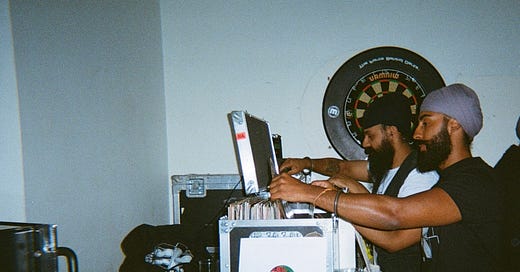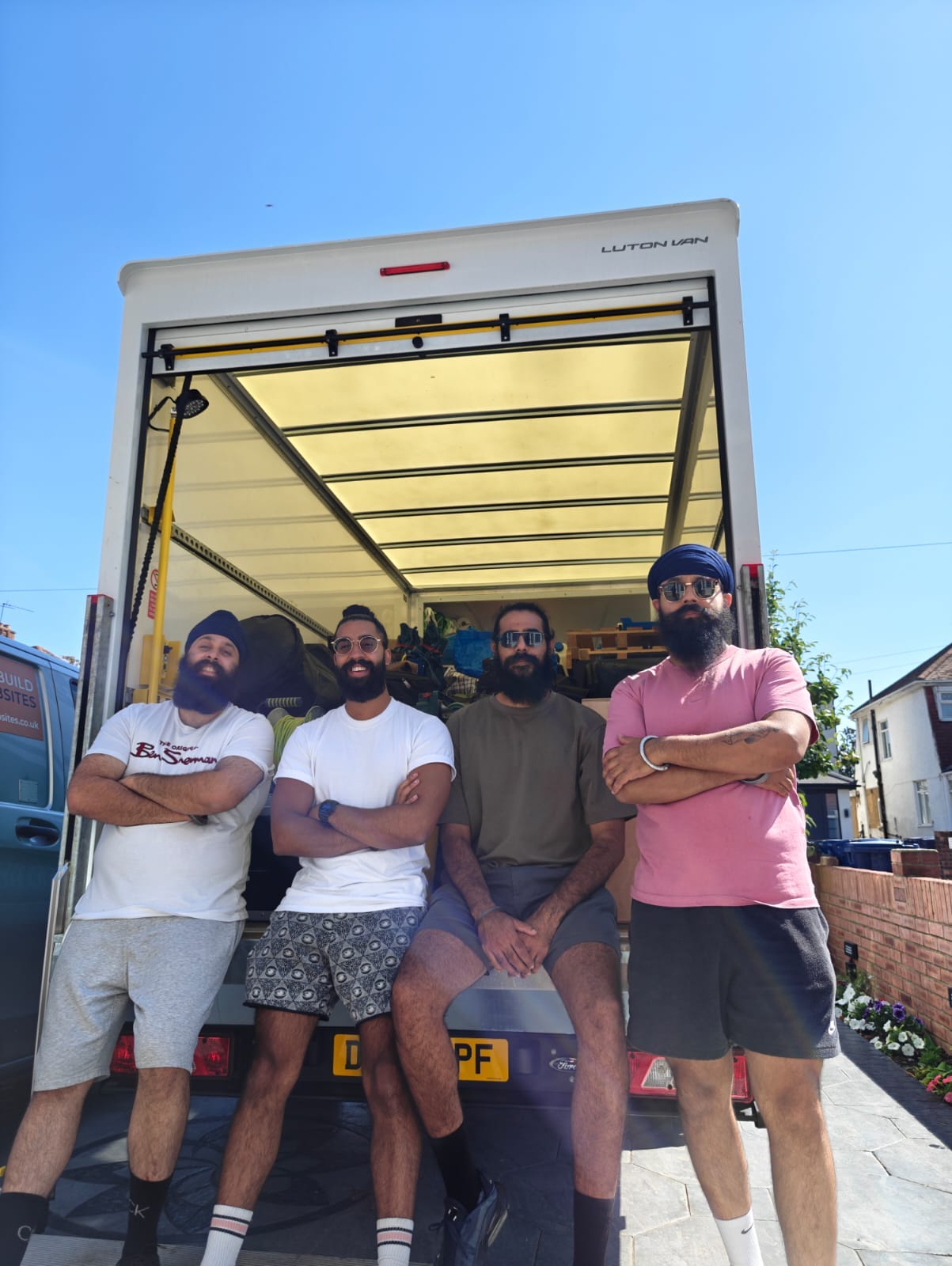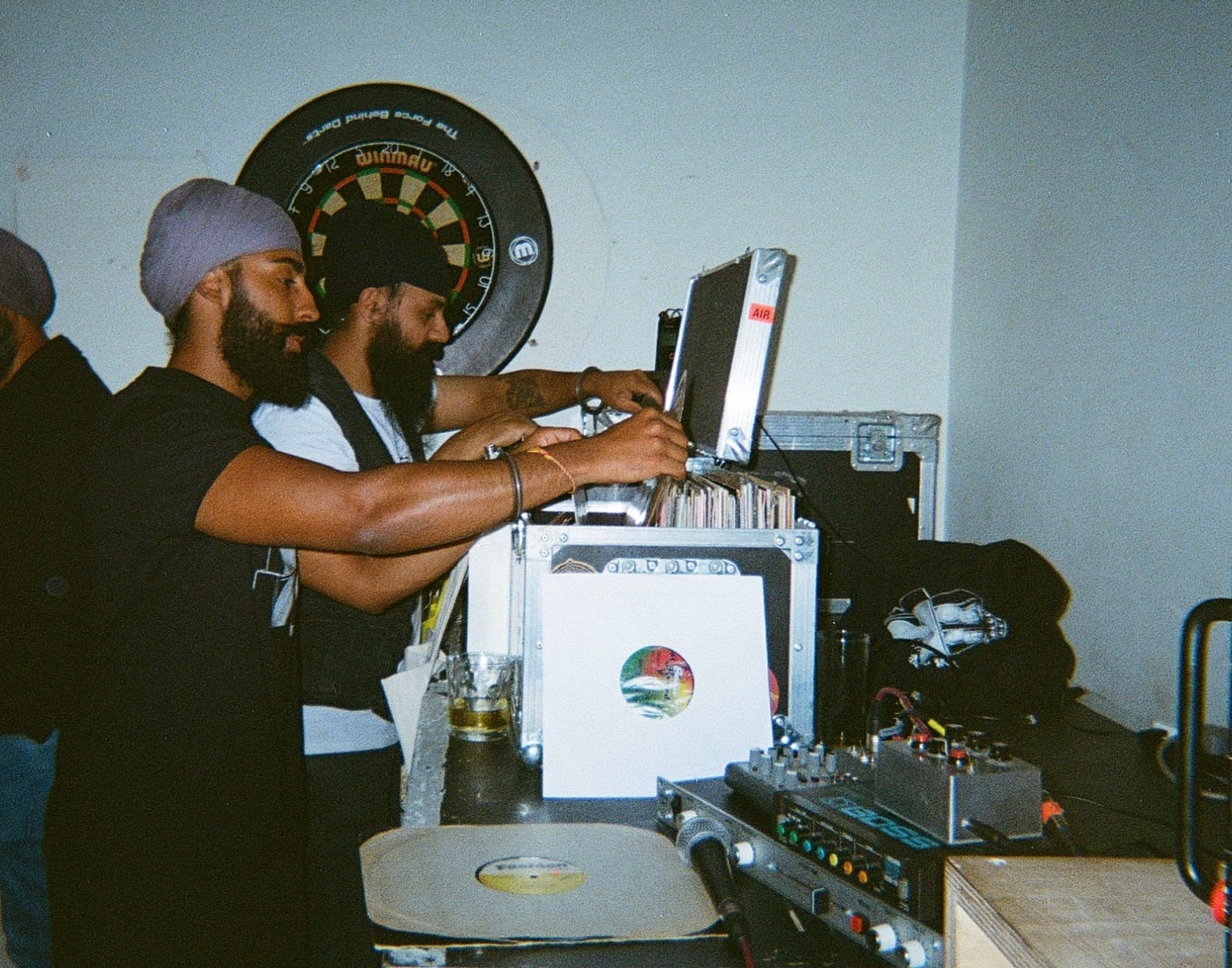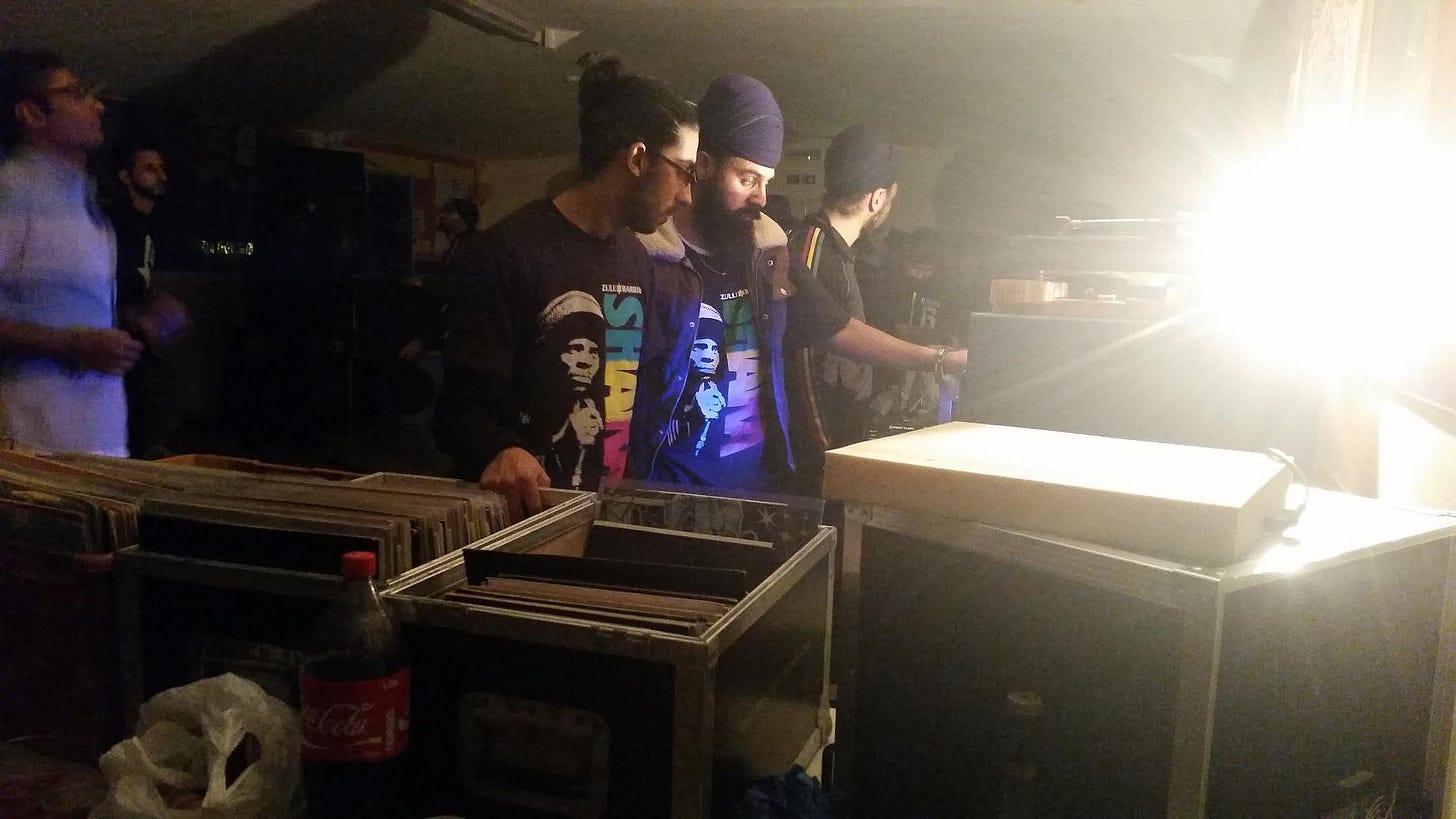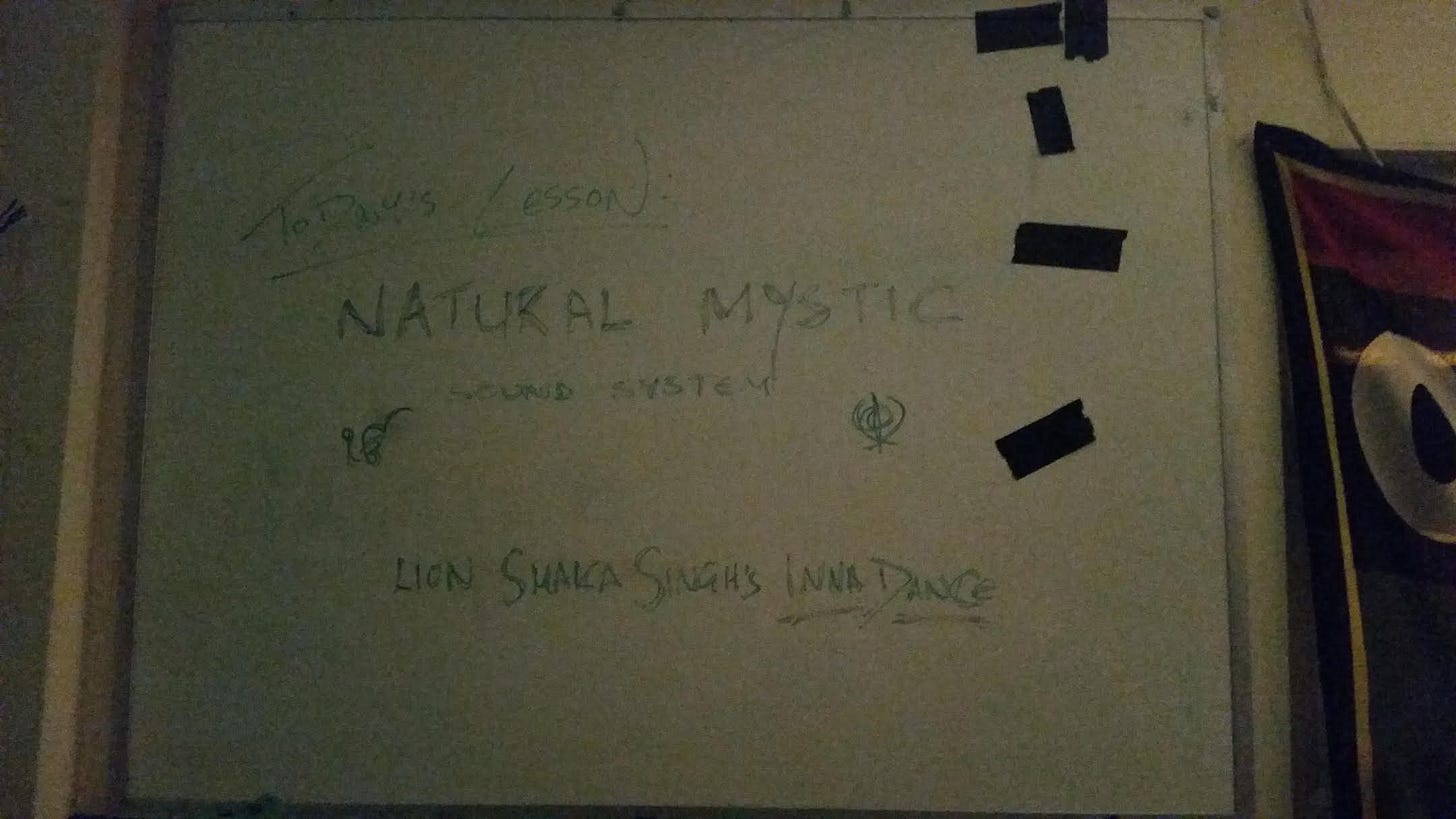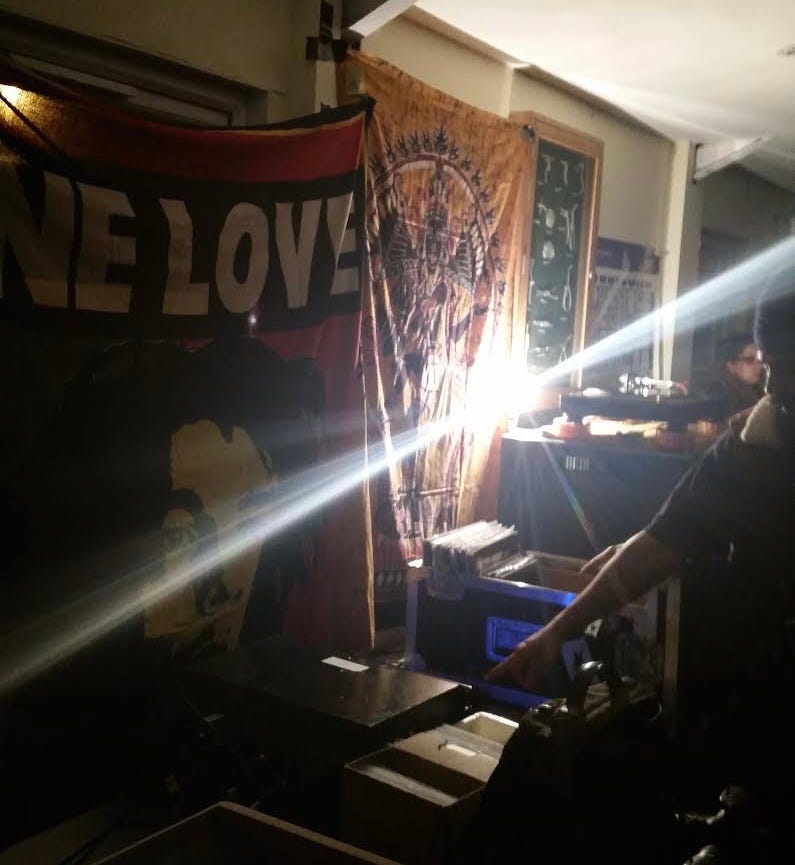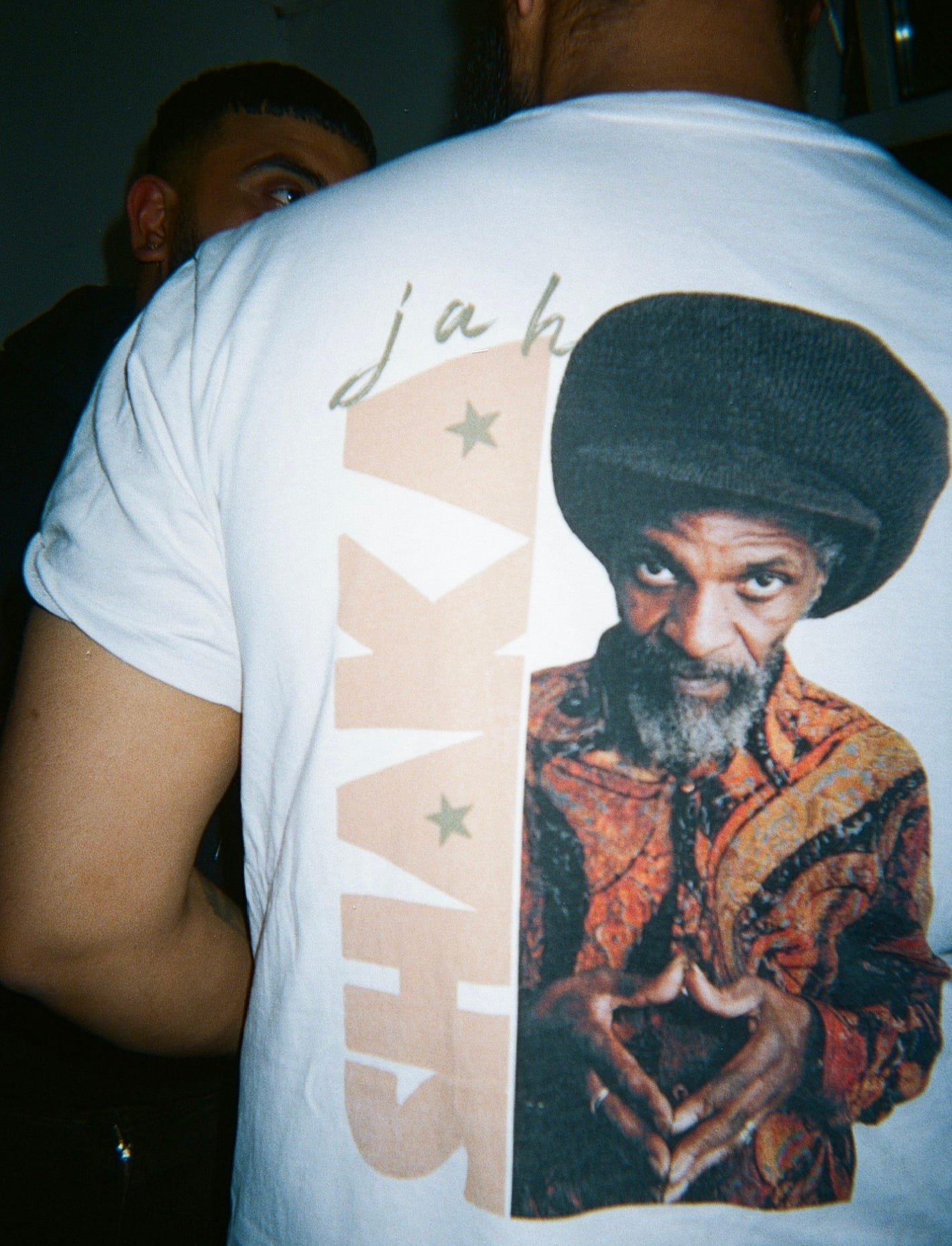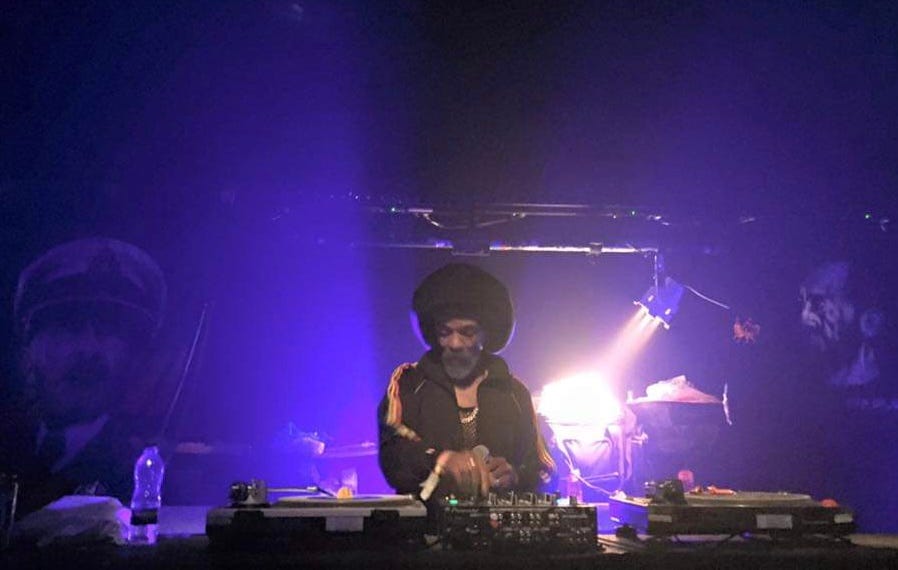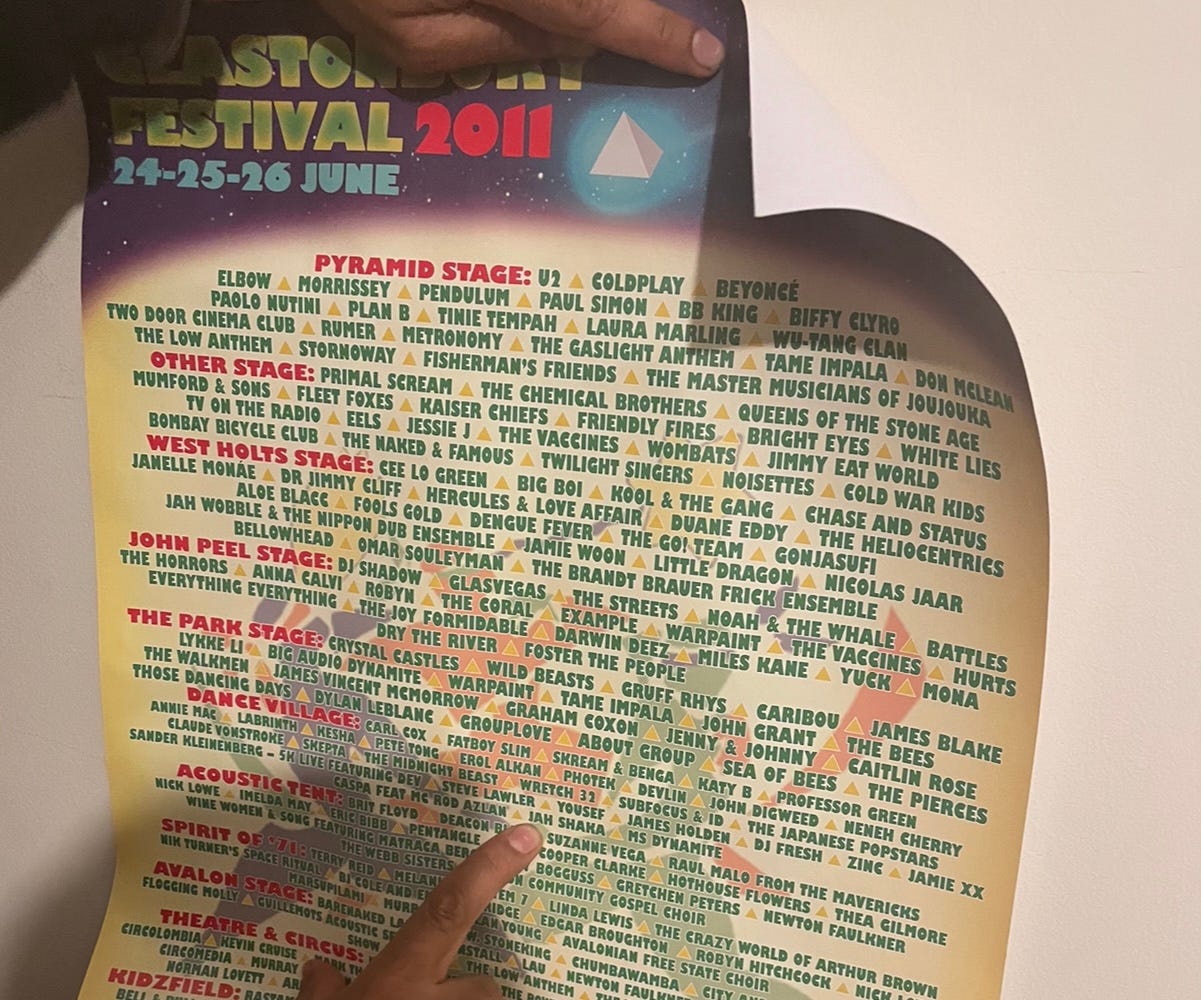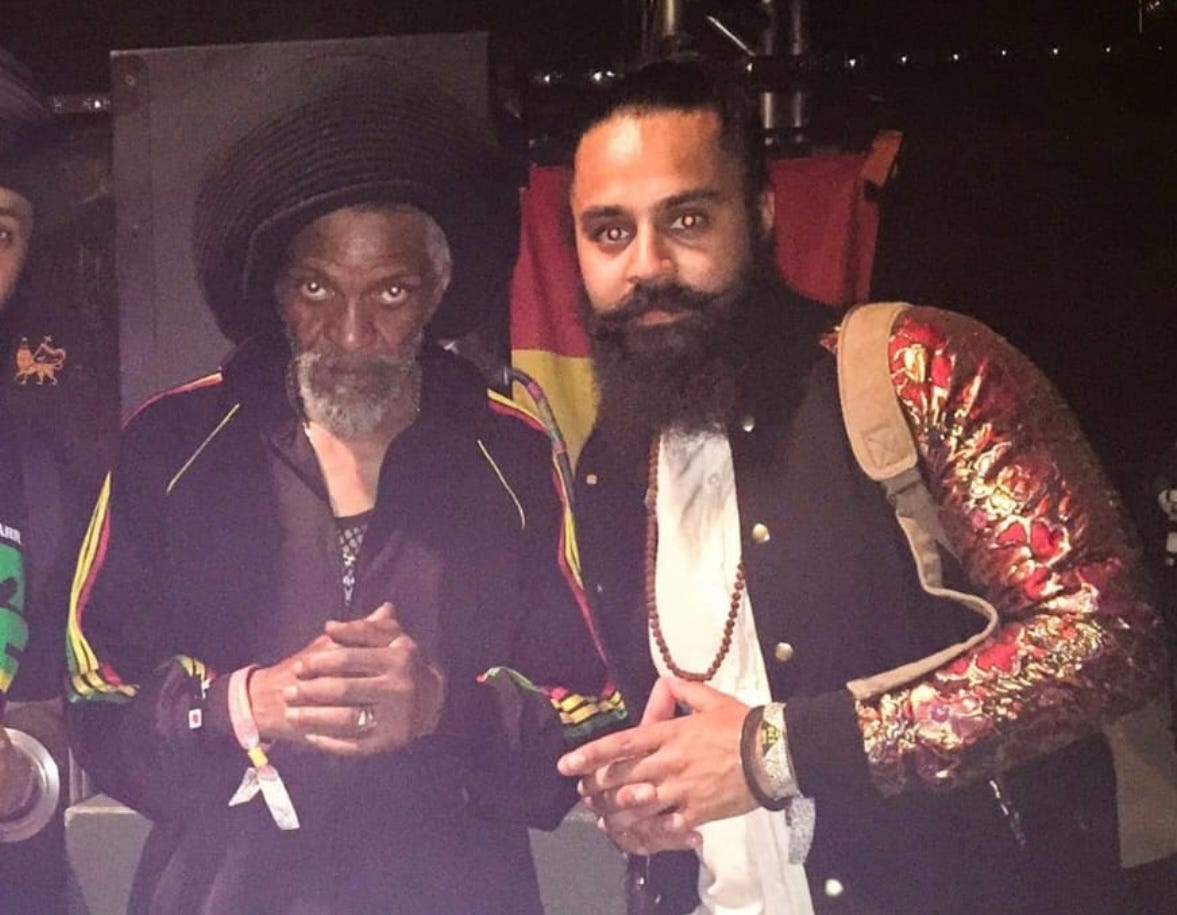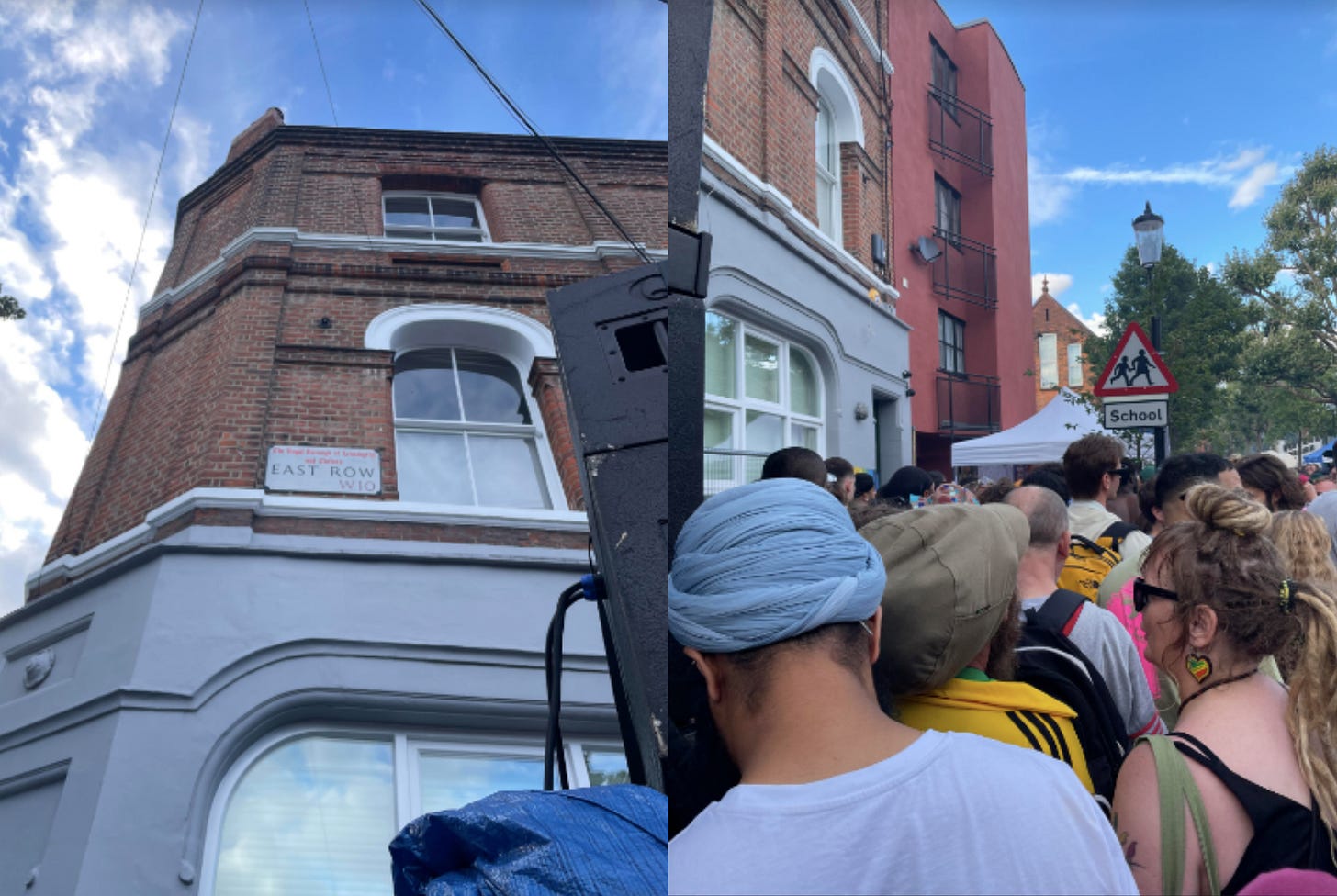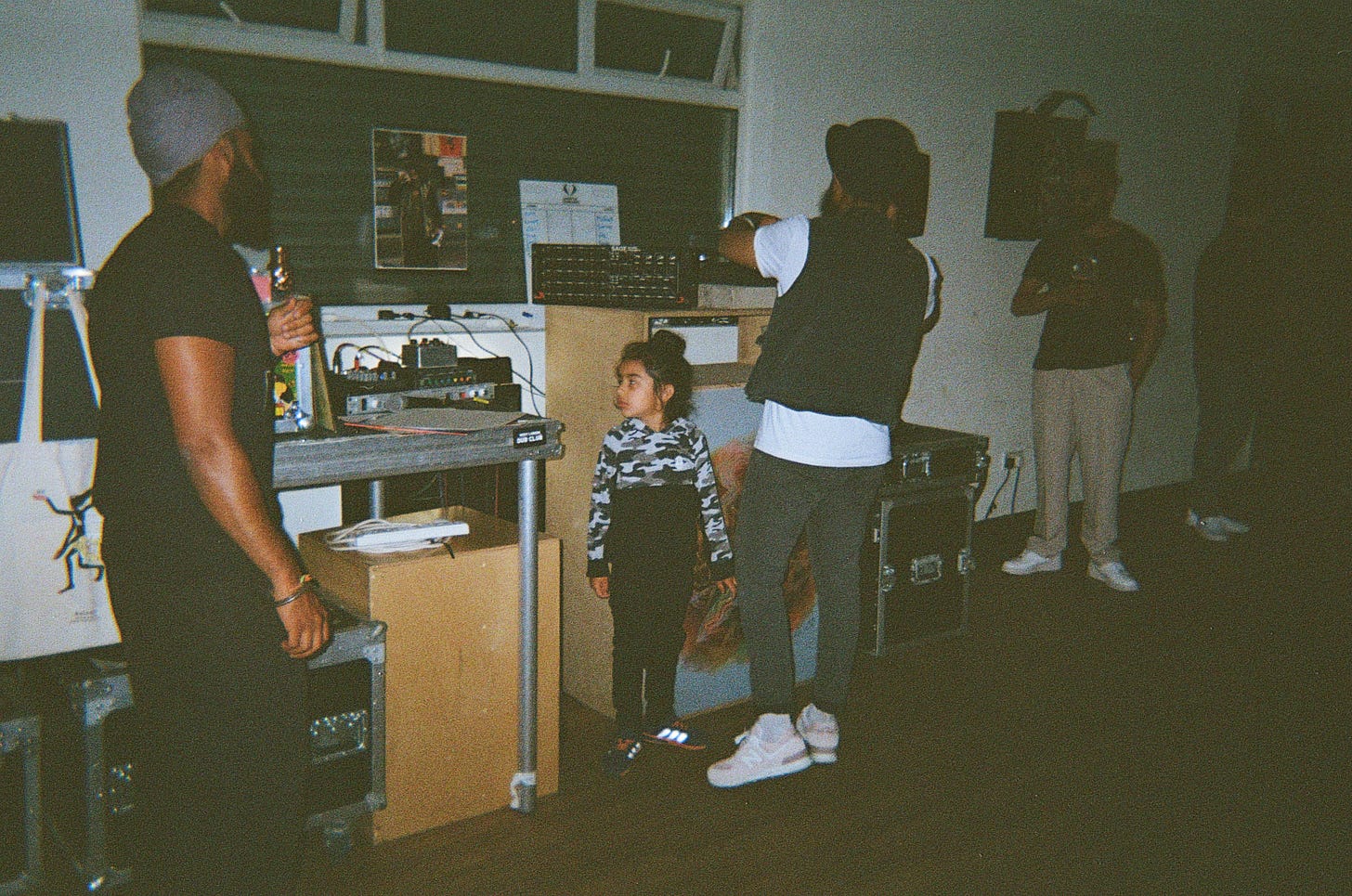The Vedic Roots were already planted in the fields of Glastonbury.
It’s official! The van is loaded up and they have made it to Arrivals!
The crew grouped together once again at Vedic Roots HQ to load up as they set-off for an epic culmination of their rise to success over the years; a set at none other than The Glastonbury Festival.
The frontmen of the sound system Ranvir and Taranvir, known locally as Rana and Tani have spent the best part of the last decade building their speaker boxes and sound system from scratch as well as collecting a pretty hefty amount of vinyl records.
In the weeks leading up to Glasto I sat with my long-time friend Rana in his living room in Southall eating midnight desserts as per usual, trying to piece together the timeline of our friendship over the past 20 years or so. Rana and I met in the early 2000s as he and my brother embarked on what they didn’t know was their journey into the creative arts, as amaetuer dholi’s. As early-teens they would meet up once a week to learn dhol-beats, connect with their roots and each other.
I’ve had the pleasure of watching Rana grow up from a cheeky high-energy boy with a distinct laugh into a man and father all whilst on a journey of discovering music, art and starting a sound system; he’s still going strong with that same laugh and youthful energy. We reminisced about a lot that evening, mainly to do with how he discovered dub, roots and reggae music. It’s through Rana that I met Tani and as often I see these guys it was quite the challenge to get them seated long enough to talk about their journey; eventually Tani and I jumped on a phone-call before they headed off to Glasto.
And so, let me take you back in time:
The year is 2015, and we’re helping (watching) the lads wheel in flight cases and hang up a combination of Lord Shiva and Bob Marley flags in the Scout’s hut on Allenby Road. Little did we know this would be the start of Vedic Roots’ long journey through the underground dub-scene in West London to becoming an established sound system as they continue to bring classic roots music to an ever-diversifying music scene. Since the Scout’s hut, Rana and Tani sought more opportunities to test out their music and speakers. They played an open vinyl session at the legendary Ronnie Scott’s as well as a set in East London for Off The Record before getting booked (three times!) at legendary London nightclub Egg.
So, let’s go even further back:
The year is 2002 and Rana and his cousin have just finished a dhol class at Southall Community Centre. A few months before this class someone made Rana a mix-tape of beats and songs he could practice playing dhol to. Scrawled across the front of the tape in a marker was: ‘Roots and Culture Vol.2’. The reason a lot of Panjabi’s in Southall love reggae and dub music Rana explained is ‘how well the music mixes with Bhangra beats’. Dholi’s and DJ’s were discovering reggae through exploring ways they could mix and remix their favourite Bhangra songs. ‘So I got given this tape of random songs that would help me practise my dhol and they had reggae and dub songs on them like Rumours and Iration Steppers, I was hooked. We were getting ready to leave the class and then all of a sudden this van pulls up with a heavy bassline, blaring the same type of music I’d heard on that cassette tape. A crew of Rastas and their speaker boxes poured out of the van and I knew we had to go inside, we wanted to listen to more of this. They looked us up and down at the door 'how old are you?’ We were honest, we were only 12 and 13 so we bargained with them and asked if it was ok to come back with people older than us. We ran home and convinced our parents to let us back out and dragged our older sisters with us to the community centre. They let us in but I still remember they took my salai at the front door’. Eventually their sisters left them to skank into the morning; this was the night Rana discovered The Mighty Zulu Warrior: Jah Shaka.
Tani’s introduction to reggae, roots and dub music is slightly different. ‘My first time seeing Jah Shaka was 2011 and it was at Tudor Rose’. Tudor Rose in the middle of King Street’s Southall has been a Mecca for Black British music and culture for 40 years and in particular for dub dances. At the tender age of 15 Tani remembers going in with his only slightly older cousins and their Chacha. His Dad’s brother and his friends had been attending dances right through the late 90s and early 2000s as they too were budding DJs falling in love with reggae music through their discovery of beat matching bhangra to bashment. ‘It was me, Indi, Giki, my chacha Gurms and Inderpal; and we met Rana and some of my school friends inside. It was a spiritual experience, I came out of that room liberated and I don’t think I’ve ever been that awake at 5 o'clock in the morning. That sparked off me going to every single Tudor Rose dance there was’. Similar to Rana’s experience at Southall Community, he explained ‘the bouncers always used to stop me because I was only 15, so I used to just wait outside and eventually they would warn me: ‘no cause no trouble’ and let me in’.
Southall Speaks will continue to delve into the rich history of dub and roots music in Southall but it cannot go unmentioned here. Vedic Roots stands on the shoulders of a very long and unique relationship between Southall and the genre of Roots, Reggae and Dub music. Both Rana and Tani mentioned their early influences not only being from stumbling across Jah Shaka dances in the heart of Southall but of older people in their lives being Bhangra DJs. Rana helped to explain: ‘this is the reason tracks like Rumours are so popular in Southall, they were easy to play dhol beats to or to mix in with Bhangra songs, when you’re learning to scratch and mix music as a DJ you have to go through loads of music and different genres. Naturally Bhangra DJs in the 2000s found that drum and bass fits well with everything, but reggae and dub fits really well with Bhangra music’. Taking the history of fusing cultures even further back to the 1980s and 1990s Southall wasn’t just a heavily Asian area it had a large black Caribbean community also, and so Asian and Black youths have been fighting on the front lines against facism as well as sharing music for the past 50 years.
Around the same time they were testing their early iterations of speaker boxes in the scouts hut- these were also the early days of Rana’s relationship with Glastonbury. At the sweet age of 16 he met his now wife Kiran, who herself comes from a family with rich history in the asian music, arts and instruments industry; a family who have been religiously attending Glasto as children. Now a part of the family, Rana and Kiran built the solid foundation of their relationship on the fields of Glastonbury; and one year they even took Tani along with them. I had the pleasure of joining their annual pilgrimage in 2015, one of the years Rana got to see his idol again.
Glastonbury is a place Rana was able to strengthen his relationship with Jah Shaka. Both Rana and Tani place the utmost importance on Jah Shaka and see him as their biggest musical influence. Rana explained that he connects the love he has for his religion and for Nihang Singhs as interchangeable with the message of Shaka’s music: ‘it’s easy to draw that connection, he talks about the same ideology of being warriors and defenders; his name is Jah Shaka the Zulu Warrior, that’s a direct reference to the Shaka Zulu who led the army against the British. The warrior spirit is there and he expresses it through music’. When Tani talks about Jah Shaka he says, ‘it was the vibes that Shaka came with. Everything he played had an educational message and he used to make songs and music sound very, very different. Some people didn’t like the distortion, some people didn’t like the way the sound came across because it wasn’t an audio file but it had that old school feel, it had a feel that no one else could replicate and I don’t think anyone else has replicated it until today. And it was also about the general elusiveness of Shaka, you don’t know anything about him, where he came from or what he’s done. It was just Shaka’.
Another important event this summer isn’t one Vedic Roots play but you’ll find them if you know where to look. I’ll give you a hint: on the corner of Southern Row and East Row by the left hand side of Aba-Shanti-I’s sound system at The Notting Hill Carnival.
For the past decade I have been tagging along with Rana, Tani and co; along with most of the Southall dub scene. Every year you can find dubheads in this exact location. At first it was important to me to meet up with everyone on time so I didn’t miss out; but it is unquestionable that if you are from Southall you will find someone you know. Now I live on the other side of London I need not worry about meeting people beforehand as everyone will be at this exact location at some point across the two days.
The most recent Vedic Roots dance was at Brook House FC in Hayes, the new home of West London sound systems. This was the first time we saw them up against another sound, hailing from Brighton they welcomed Roots Garden to the ends. It is a rite of passage for sound systems to play back to back against other sounds, testing each other’s ability to choose tracks on the spot in response to what the other has played. It was amazing to see all the hard work and dedication to collecting vinyls and building speakers play out as the perfect celebration of 10 years of Vedic Roots.
Rana and Tani stand tall as the faces of Vedic Roots as sound selectors, but they couldn’t do it without their dedicated team behind the scenes. It takes Jagz, Harman, Indi, Indy, and Giki. Good luck lads, we’ll see you on the flip side. Here’s to the next 10 years :-) x

